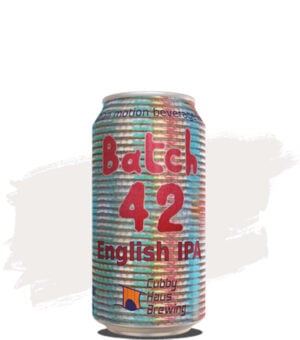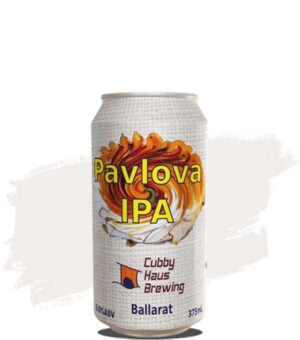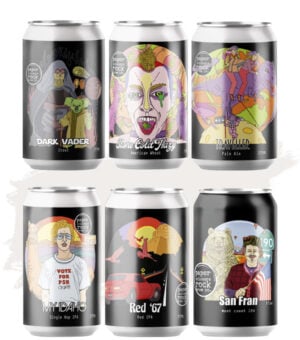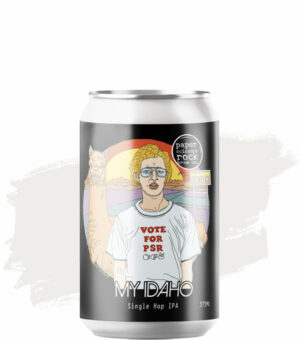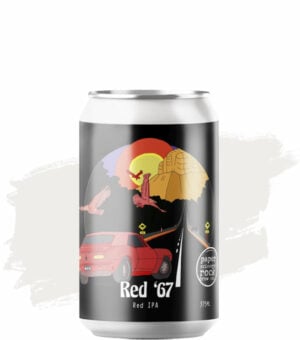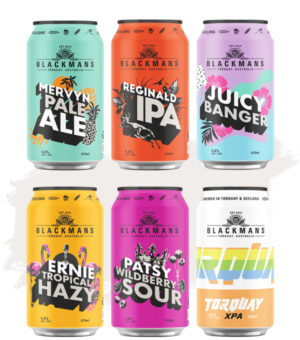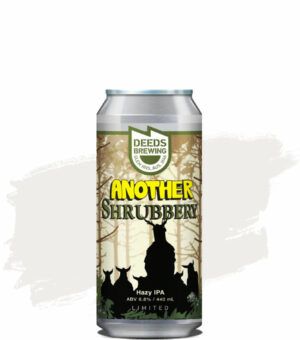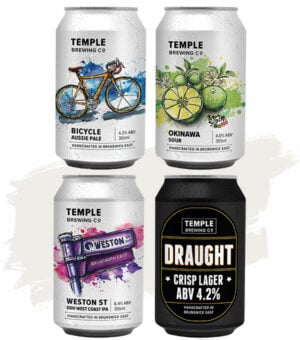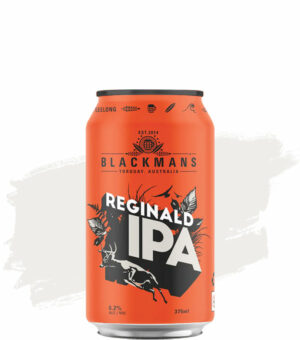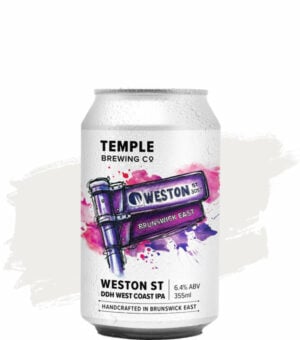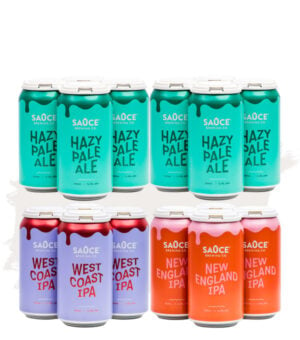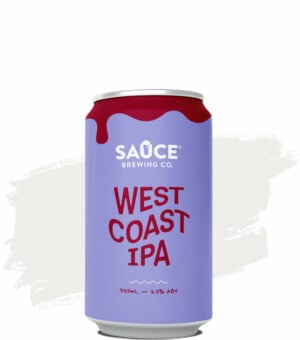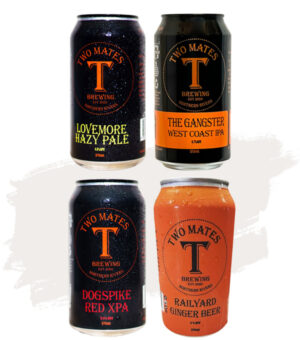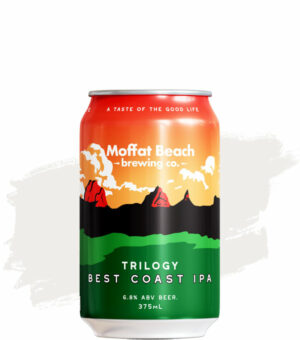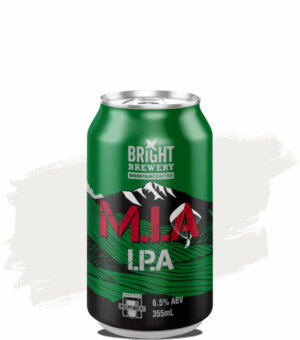IPA
Showing all 24 results
-
His and Hers Bundle Buy (Case Of Feral Biggie Juice + Ragazzi e Succo Spritz)
$160.00$99.00Single$89.10MemberBuy Beer
About IPA
Whether you’re new to the world of craft beer or a seasoned veteran, you’ve likely heard of IPAs. Considered the most popular style of beer in Australia, the mighty IPA is a form of pale ale, where the I.P.A. stands for Indian Pale Ale or India Pale Ale, and while having definite links to India, IPAs are not actually brewed or produced there.
IPAs have become popular due to their strong flavour, rich aromatics and full body, which are very distinctive against more traditional lagers and lighter pale ales. IPAs are known for their bitter qualities, due to an increased amount of hops in the brewing process, and are considered by many as having a higher alcohol content than other beers- although their ABV (alcohol by volume) only sits at around 6-7%.
How does it taste? One word, hoppy. IPAs are distinctly dry and bitter, meaning it is very refreshing and great for the summer.
History of IPA Beers
So, how did IPA get its name?
You might be thinking, India Pale Ale, must be from India? Or, this must be like Indian tonic water, given to the masses of skinny soldiers arriving in India during British colonisation (during the 1700’s) who were in need of a good party. While this story is well-regarded by many as factual and quite entertaining, it’s a bit more of a simple story.
The India Pale Ale was born when exportation of beer, all kinds of beer- porters, stouts, pale ales, lagers, to 1700’s India was established, and the Indian population took quite a liking to the pale ale. To increase sales, the pale ale was marketed to be created only for exportation to the Indian market, and thus renamed the India Pale Ale. The abbreviated ‘IPA’ has now taken hold, an obvious cause of the new technologies and texting slangs of modern society.
What is National IPA day?
The IPA even has its own nationally recognised day. On the first Thursday of August, the world can celebrate it’s most popular beer. By raising your glass, whether it be full of an Imperial IPA, or a New England IPA or a West Coast IPA, you can cheers to the best beer around.
IBU: Bigger and Higher
Indian Pale Ales can be separated from other pale ales by two main characteristics, bigger hop aromatics and higher bitterness levels. In terms of bigger hops aromas, IPA’s are known to be quite fragrant and are often associated with floral, citrus, earthy and even piney aromas.
Higher bitterness levels are caused through the beer production process. Through using an increased amount of hops (thus the amazing aromatics), especially hops with Alpha acids, an increased level of bitterness is maintained in the IPA style of beer. For many beer drinkers, this can be a dealbreaker of flavour, as some aren’t used to such high bitterness.
How is bitterness measured in IPAs?
Bitterness levels are measured through a scale that is aptly named International Bitterness Units, or IBU. These units measure the level of hop and alpha acids in beer through the use of a formula. For some IPA beers such as the American IPA, a bitterness level between 30-40 IBU is average, while a Double IPA can be anywhere between 60-120, meaning it has way higher levels of bitterness.
Different types of IPA’s
Around the world there are many different IPA styles, including those that are from a variety of countries such as:
American IPAs:
Also known as a West Coast IPA, American craft breweries aim to tip the scale of IBU with their IPA style of beer, hoping for a high hoppy bitterness. It is dark and clear and often golden in colour, offering aromatics of pine. A great example of a West Coast style IPA is the Stockade 8Bit IPA, with it’s big bitterness, hoppy flavour and aromas of citrus and florals.
Australian IPA’s:
Largely influenced by the American craft beer scene, with aromatics of citrus and passionfruit replacing or adding to the pine scents. A classic recommendation for an Australian style IPA would be Young Henrys IPA, with it’s golden hue and huge burst of tropical and citrus aromas.
The English IPA:
A stronger, more well-rounded version of the original pale ale, the English IPA reflects the history of the IPA’s origins. This IPA usually contains more malt, giving woody or earthy aromatics to it.
East Coast IPA:
The East Coast IPA is similar to the English IPA, with a likeness to the original pale ale in it’s malty sweetness. It’s difference lies in the addition of a citrus and fruity hoppy quality. Often compared to the West Coast IPA, they exist on almost opposite ends of the IPA scale, with the West Coast being aggressively dry and bitter and the East Coast sweeter in flavour and bitterness.
Double IPA:
Often referred to as an Imperial IPA, Double IPA’s are the same as a regular IPA with a heightened hop profile and sometimes an increased amount of malt. This means that the alcohol content is higher, with the ABV at 7.5-10%.
Triple IPA:
The Triple and (less well known) Quadruple IPA do the same thing as the Double, but of course with a bigger increase of hops. These IPA styles are less well known due to their high alcohol content between 10-16%.
Session:
Session IPA’s are the fastest growing market for IPA craft beers, with a low alcohol content of 3.5-5%, they can be considered as a mid-strength beer.
Black IPA:
Also called a Cascadian Black Ale, Black IPA is brewed with dark roasted malts, like you’d find in a stout. There’s still a lot of hop aroma and finish which combines intriguingly with the chocolatey coffee flavours.
Experimental:
Experimental IPA’s use experimental hops during their brewing process. Unlike other IPA brewing processes, that often utilise the same or similar hop varieties such as Galaxy and Citra, experimental IPA’s use experimental hops that are created within each brewing company.
What is hop oil?
Hop oil is very new to the craft beer world. It uses extractions of hop oil instead of the usual addition of hops to the beer brewing process. This is quite a new method of beer brewing, and allows for brewers to keep and store hop oil in off-seasons to the harvesting season, ensuring fresh hops all year round.
How is an IPA made?
The brewing process of an IPA involves three separate intervals of hops addition. At the first interval, hops are added in the beginning 5-10 minutes of the boil. These hops create bitterness. At the second interval, 30 minutes in, more hops are added for flavouring.
Finally, at the end of the boil is the last addition of hops, which add the aromatics.
Traditionally, this process is done in a continuous fashion, giving us Continuously Hopped IPA’S. However, Single Hop IPA’s, in which only a specific type of hops is added to the brew, has become popular amongst craft beer connoisseurs, who want to know which hops create distinct flavours and aromas.
Then there are Fresh Hops IPAs, in which the hops have been freshly picked and Dry-Hopped IPA’s in which dry hops is added after the boiling process (before the fermentation process) to increase the aromatics of the beer.
Overall, the IPA is a seemingly simple idea. Originating in England, and inspired by the traditional pale ale, the IPA has now become a complex and experimental journey for brewers and beer-drinkers alike.

